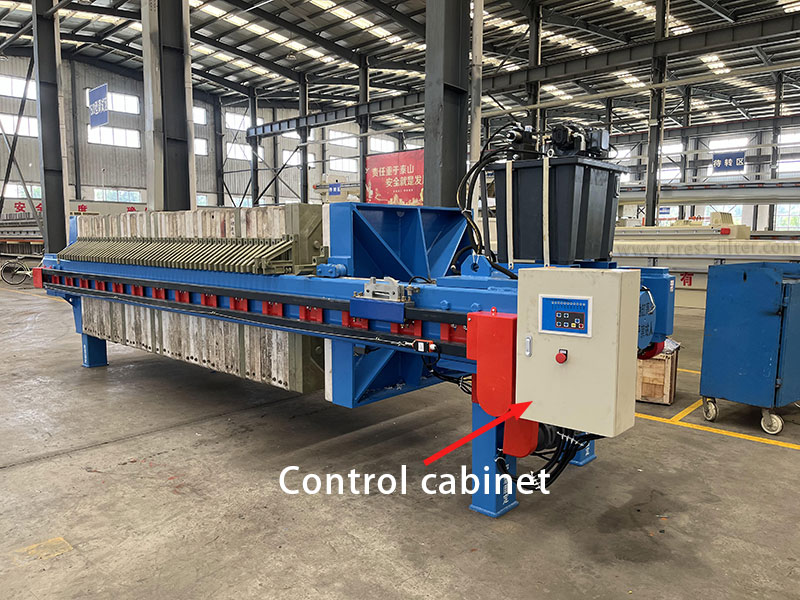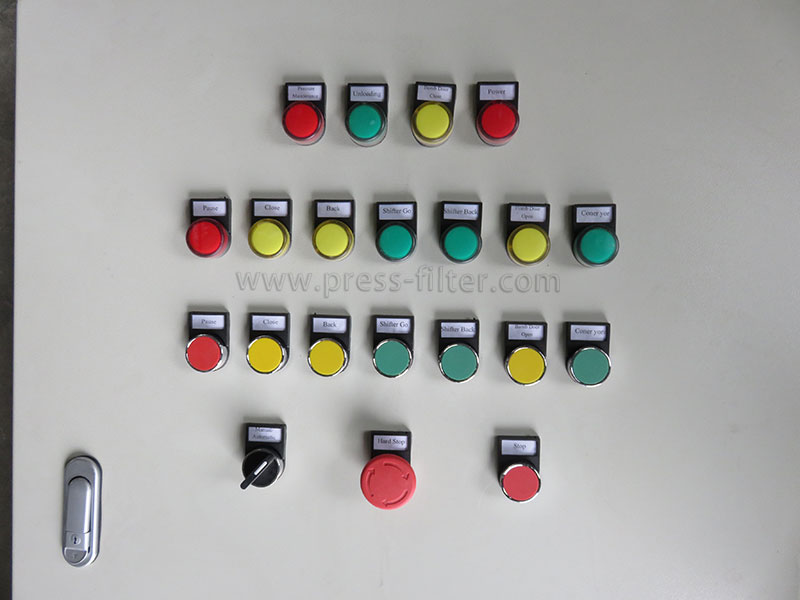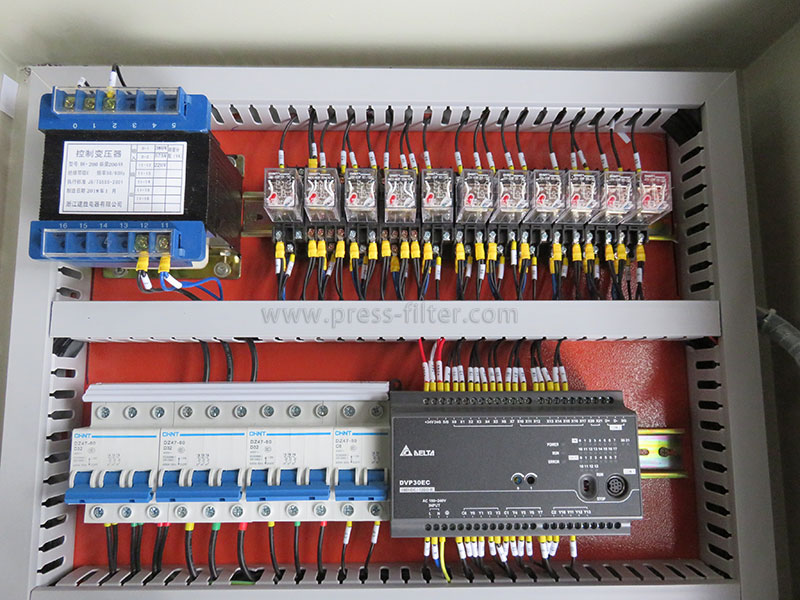Application of PLC in Filter Press
As a kind of solid-liquid separation equipment, the filter press is a mechanical device that uses mechanical force on one side of the filter medium to guide the filter plate to compress the material to perform solid-liquid separation of the material. At the same time, the filtering device is used to complete the filtration work. The filter press has the advantages of a good separation effect, wide application range, and good filtration operation effect.
Programmable controller (PLC for short) is a new technology developed in recent years. It has many advantages, and its efficiency is obvious when used as a control system for filter presses. With the rapid development of large-scale integrated circuits, the software and hardware functions of PLC have undergone tremendous changes, which has greatly promoted the development of related industrial sectors. PLC has been used at home and abroad to control the feeding, squeezing, blowing, vacuum drying, drainage, loosening, plate unloading of cakes, cleaning of filter cloth, and other processes of the filter press, making the entire cycle completely automatic. At present, with the development of chip technology, PLC technology has been further improved. The PLC successfully developed by Siemens of Germany has the characteristics of fast operation speed and strong functions and is widely used in the control field.
What is PLC?
PLC is a general industrial automatic control device based on a microprocessor and developed by integrating computer technology, automatic control technology, and communication technology. It has a series of advantages such as small size, strong functions, simple programming, flexible and universal, and easy maintenance. PLC’s high reliability, strong ability to adapt to harsh environments, and modular structure make it widely used in metallurgy, energy, chemical industry, transportation, electric power, and other fields.
Characteristics of PLC
- PLC programming is easy to learn. PLC is a user-oriented device. Its intuitive programming method does not require professional computer knowledge and language. It can be learned in a short time.
- The PLC control system is simple and easy to change. There are many types of PLC and peripheral modules. You only need to connect the corresponding input and output signal lines to the PLC terminals to complete the control system for various needs. When the control requirements of the PLC system change, just change the ladder diagram program.
- PLC system maintenance is easy. PLC has complete monitoring and diagnostic functions. The working status of various internal components can be monitored by programming software. It can quickly and accurately find and eliminate the fault point in time. It can also be used with the touch screen to display the fault location or fault attributes, which greatly shortens the maintenance time.
Some Applications of PLC in Filter Presses
Filter press automatically shuts down
There are multiple buttons on the filter press control box, including a power switch, emergency stop buttons, etc. The automatic control system can use the hold button to complete the manual automatic control switching action. When the oil level in the tank is at the normal position, the filter press can be closed only after it is ready. During the closing process, the main and auxiliary hydraulic cylinders and electric valves act cooperatively with each other. After reaching a certain position, the closing limit switch is triggered, and the filter presses. The machine stops shutting down.
Automatic feeding
After the filter press is closed, the feed pump starts feeding. The completion of the feeding action can be judged based on the action pattern of the liquid level sensor in the liquid collecting tank. During the process of feeding each filter chamber by the feed pump, the hydraulic pump should stop. If the filter chamber is pushed open, the filter press should be able to automatically stop feeding and close the filter chamber. After the closure is completed, the filling and feeding action can be resumed, and the pressurized filtering action can continue. After the pressurized filtering action is completed, the controller controls the opening and closing of the inlet/exhaust valve to automatically perform air-blowing and replacement actions; at the same time, during the loading and filling process, the top blowing valve of the filter press automatically opens and closes according to the indicated action. Close, allowing the moisture in the filter chamber to decrease.
Automatic cake unloading
The automatic cake unloading action of the filter press is executed after the filtration is completed. In the case of a filter cake containing high moisture content, the resistance formed between the filter cloth and the filter cake will be relatively large. At this time, the cake unloading action cannot be completed solely by the gravity of the filter cake. It is necessary to rely on manual tapping to unload the filter cake, which will reduce production efficiency and bring inconvenience to production. The cyclic automatic cake unloading action is designed, and the number of cycle cake unloading is set through the touch screen, allowing the filter press to perform the cake unloading action multiple times, which not only can quickly and completely unload the filter cake but also avoids the phenomenon of manual tapping of the filter cake.
Conclusion
In short, the use of a filter press in conjunction with PLC can greatly improve production efficiency. As production needs change and technology develops, the PLC control system can be optimized and upgraded to improve the performance and automation level of the filter press. At the same time, it should be noted that when the filter press is controlled by PLC, the stability and reliability of the PLC control system should be ensured to avoid production interruption or safety accidents caused by control system failures. At the same time, operators should have certain PLC programming and maintenance skills to debug and repair the control system when necessary.




